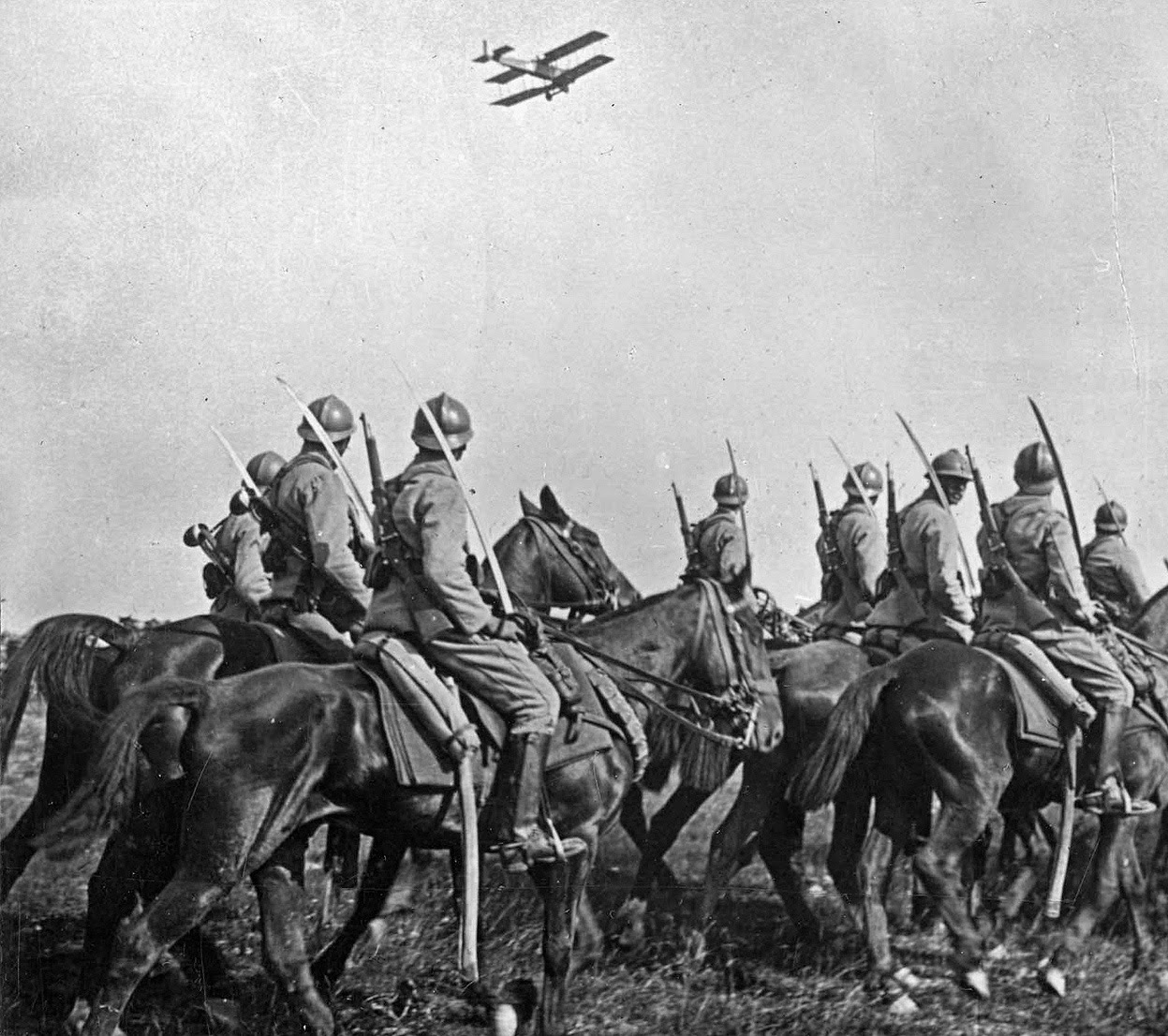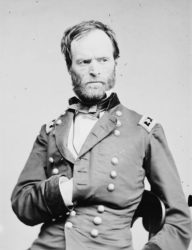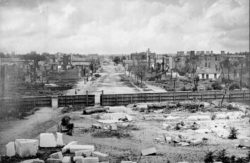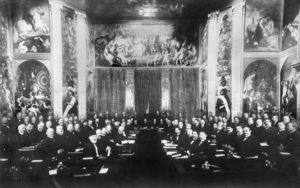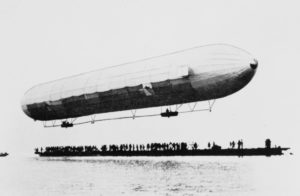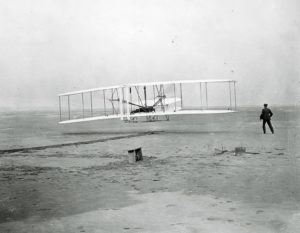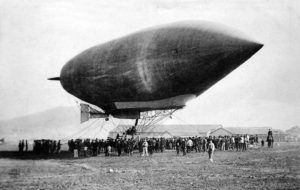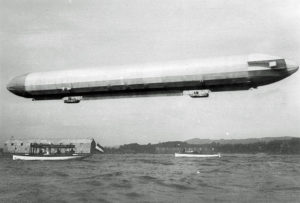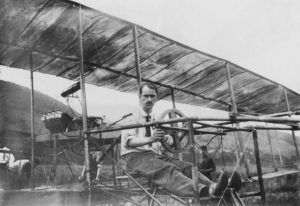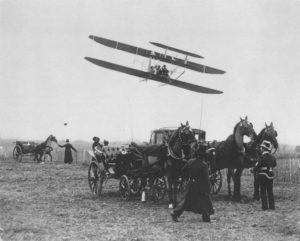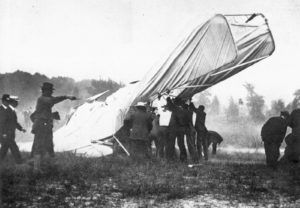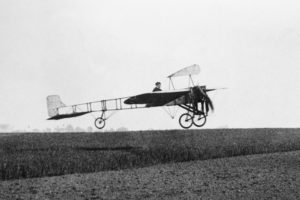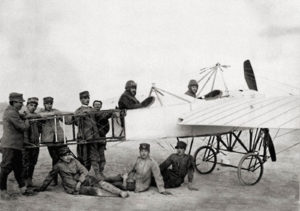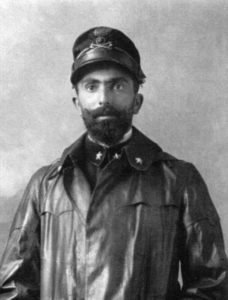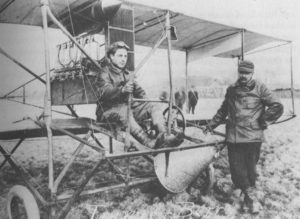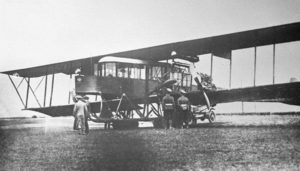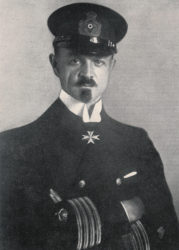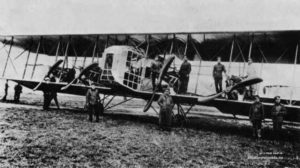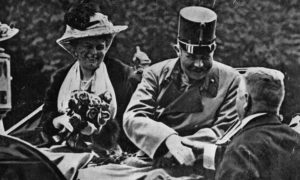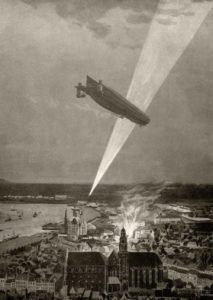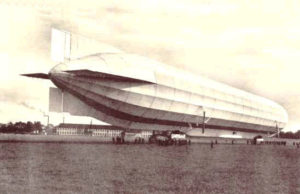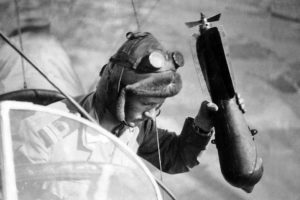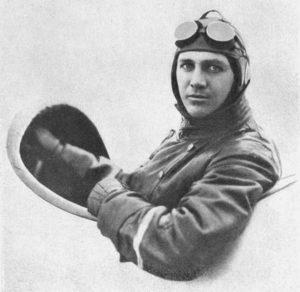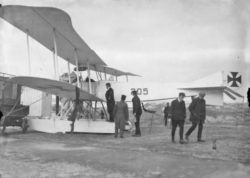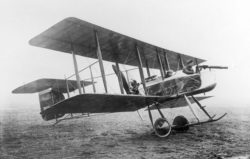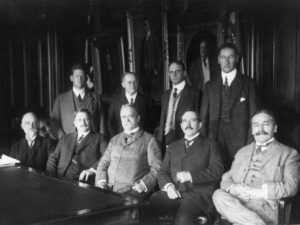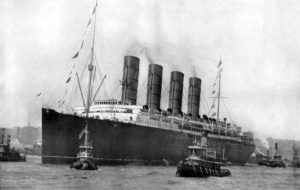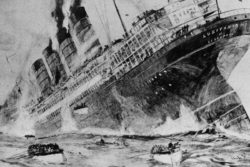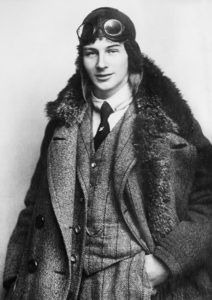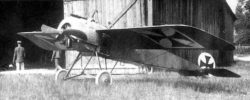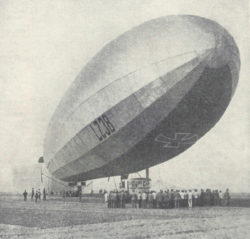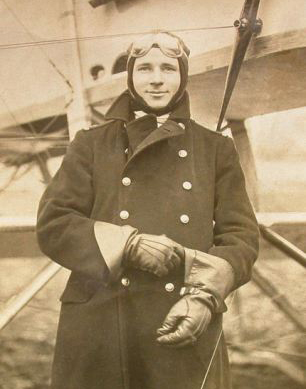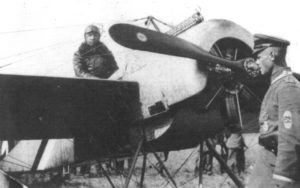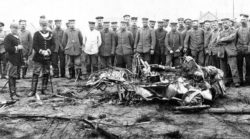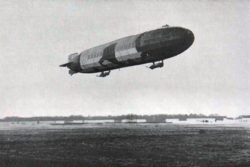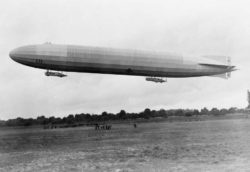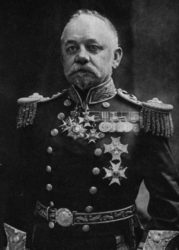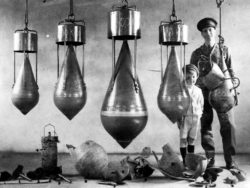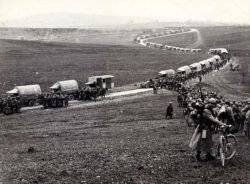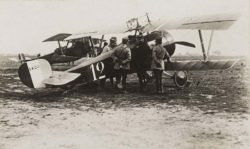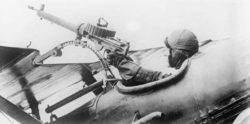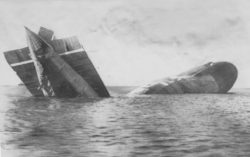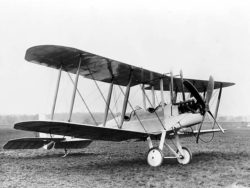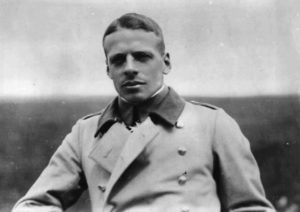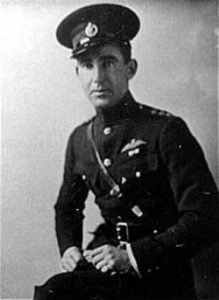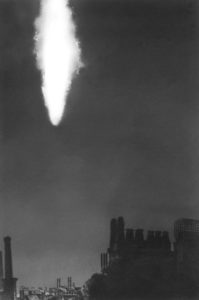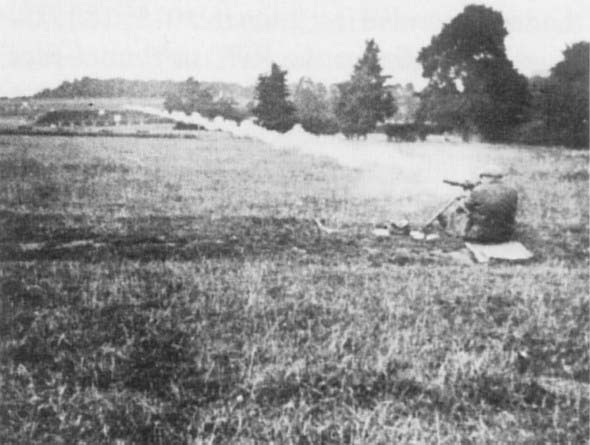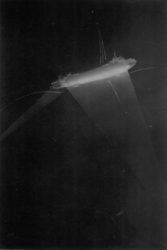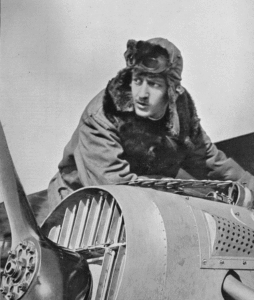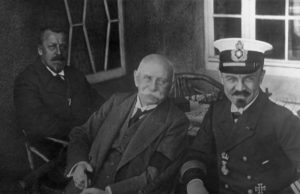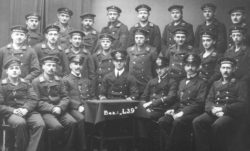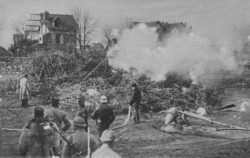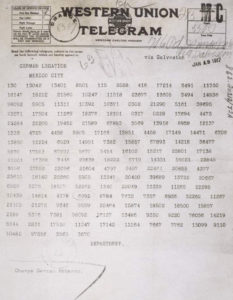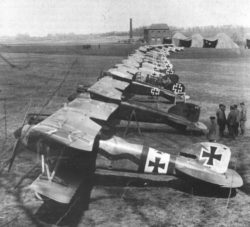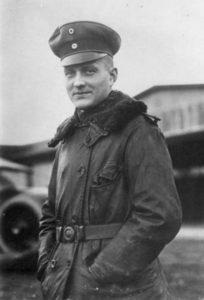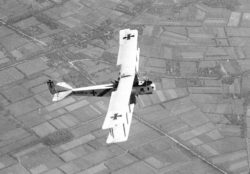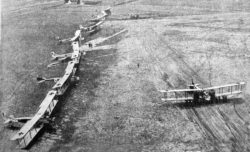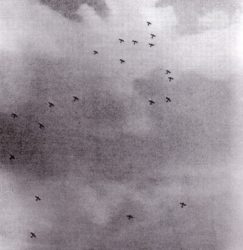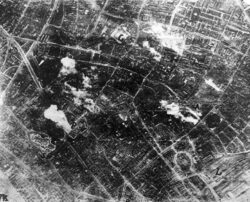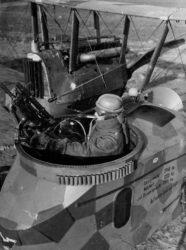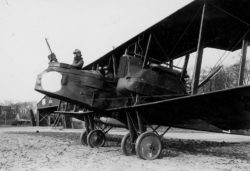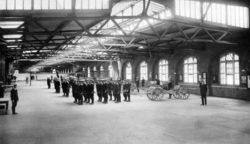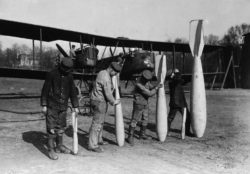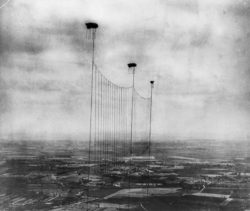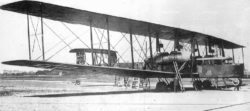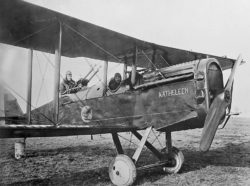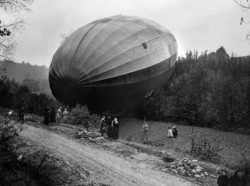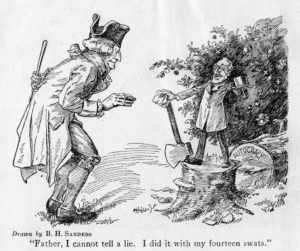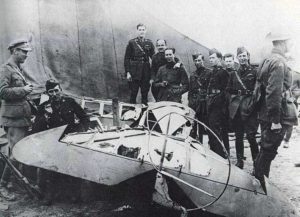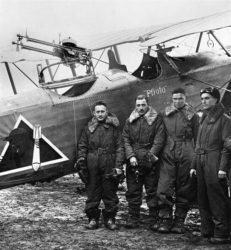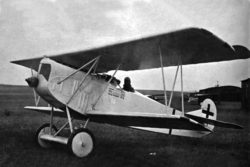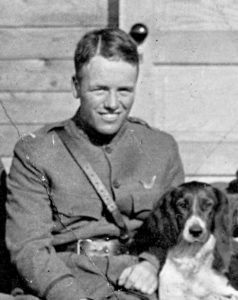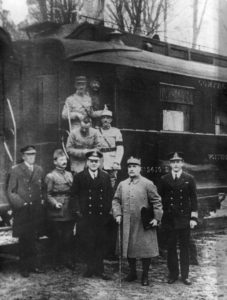CG Military Division of the Mississippi MG William T. Sherman authors a letter to CSA MG Henry W. Halleck in which he details the logic behind his targeting of civilians following the fall of Atlanta, Georgia on 2 September 1864. Sherman's "march to the sea" - the destruction of civilian property between Atlanta and Savannah - and his upcoming invasion of South Carolina are notable as being perhaps the earliest clear exercise of 'total war' in modern warfare.
The American War of Secession (1861-1865) - a more accurate title than "American Civil War" - began as a political controversy over the practice of slavery and the political leverage it gave to the less-populated southern US states in balance to the North. The growing number of additional states upset this balance and the election of Pres. Abraham Lincoln (R-IL) without a single southern vote signaled that the South no longer had any federal influence. This was particularly galling for the southern states due to their inability to counter northern tariffs and taxation on, if the South were considered its own country, the fourth largest economy in the world. Declaring secession and forcibly removing US troops from its soil, the southern Confederacy was immediately beset by a long, bloody invasion. The scale of the conflict shocked European observers, marveling at how quickly the war escalated and the ferocity in which it had done so. Sherman had long advocated for a total war strategy and his campaigns against Georgia and South Carolina were part of a larger pattern of US forces adopting increasingly draconian measures. The effect was catastrophic, flattening an economy already choked by naval blockade and increasing desertion rates to untenable numbers.
While the term 'total war' is not coined until 1935, the concept is as old as time itself. Strictly speaking, it entails war without restriction, the idea being that victory entails not just the defeat of enemy combatants, but the entire nations which support them. In essence, total war asks the question: if it is the civilian infrastructure that is responsible for supporting the military, then should they not be targeted? I.e., a war without restriction. Still, outside of the realm of ancient history, total war was the exception in European history, usually only appearing in clashes with outside cultures. Sherman's loud embrace of the concept (even if not in name), as well as contemporary field officers, signals a major shift in military thinking.
29 July 1899
The Hague Convention concludes after three months of meetings which ratify a series of international laws of war. Instigated by Russian Czar Nicholas A. Romanov II, this document - the first international convention to govern military conduct in wartime - draws heavily from the US Lieber Code, which was ratified (but rarely followed) during the American War of Secession (1861-1865). An attempt to create an international court to alleviate potential conflicts fails when various governments express skepticism in its creation.
In regard to airpower, the fourth ratification (Hague IV) includes "Prohibiting Launching of Projectiles and Explosives from Balloons," theoretically binding the nations involved for five years time. Likewise, Article 25 (Section II, Hauge II) of the Hague Convention prohibits “the attack or bombardment of towns, villages, habitations or buildings which are not defended.”
Click here to read the text of the Hague Convention of 1899.
2 July 1900
The first flight of a rigid airship takes place when LZ 1, designed by Ferdinand A. H. A. Graf von Zeppelin and Theodor Kober, takes off from its storage shed on Lake Constance near Friedrichshafen, Germany. The 420 ft hydrogen-based dirigible flies just under 4 mi on its first flight, and breaks the record held by La France on its next two. Despite these successes, Zeppelin fails to arise interest from potential investors and later scraps the airship. (13 mph)
17 December 1903
Bicycle-makers Orville and Wilbur Wright pilot the first flight of a heavier-than-air flying machine in Kitty Hawk, NC, making four flights, the longest of which covers 852 ft in 59 sec. Their work is heavily influenced by German engineer Octave Chanute, approaching the problem of flight with a decidedly scientific approach. Taking turns conducting their experiments, Orville Wright is the first to actually fly the powered Wright Flyer. Public interest in their work forces the Wrights to work closer to home and they return to Dayton, OH in 1904. (31 mph)
It takes an inordinate amount of time for the US government to recognize the Wrights' achievement as the Smithsonian Institution, with federal backing, officially credits Samuel P. Langley with this feat. Despite generous funding from the Smithsonian, all of Langley's attempts at flight had failed throughout his life, however a heavily modified version of Langley's Aerodrome is successfully flown in 1914, eight years after Langley's death. When the Wrights file a lawsuit against motorcycle tycoon Glenn H. Curtiss for patent infringement on controlled pitch, roll, and yaw, Curtiss references Langley as a predecessor to the Wrights, voiding their claim. It is for this reason that the Smithsonian, finding common cause, has Curtiss revamp the hapless Aerodrome in 1914. This ever-heated feud eventually sees Orville Wright (Wilbur dies of typhoid fever in 1912) send the Flyer to England for display in the London Science Museum in 1928. Public opinion favors Wright and the Smithsonian finally recognizes the Wright brothers' achievement in 1942; due to the war, the airplane is not returned until 1948 - 11 months after Orville Wright's death.
The Wright Flyer is currently on display at the National Air and Space Museum in Washington, DC.
6 July 1905
The French airship La Jaune (The Yellow), built by sugar magnates Paul and Pierre Lebaudy, completes its service trials for the French Army. During these trials, the 185 ft semi-rigid hydrogen airship reaches an altitude of 3,674 ft (outside of rifle range), releases carrier pigeons, takes several photographs, and conducts practice bombardment raids against the fortress at Tours. La Jaune is the first airship purchased for military use and France builds a small fleet of Lebaudy and Renard airships over the next several years.
9 October 1906
The first flight of the 414 ft hydrogen-based Zeppelin LZ 3 takes place. LZ 3 is a redesign of LZ 2, correcting structure and control issues suffered by its predecessor in high winds. French military development of La Jaune spurs German support for Ferdinand A. H. A. Graf von Zeppelin's work, with LZ 3 being heavily financed by King William II of Württemberg. Carrying 11 people, LZ 3’s first flight goes for 2 hrs 17 mins, with later demonstration flights arousing popular interest to the point of granting flights to the German royal family. (36 mph)
4 July 1908
Motorcycle magnate Glenn H. Curtiss, with backing from Alexander G. Bell’s Aerial Experiment Association, wins the $2,500 ($67,660 adjusted for inflation) prize from Scientific American to fly higher than 5,000 ft (5,080 ft). Curtiss’s June Bug is wildly successful, boasting such features as ailerons and a tricycle landing gear; Curtiss goes on to develop early seaplanes and ship-launched catapults using this design.
8 August 1908
The Wright brothers split their responsibilities in attempt to sell their Flyer to the countries of Europe, with Wilbur traveling to France and Orville staying in Washington, DC to conduct flights for the US Army. Facing considerable skepticism for their claims of being the first to fly, Wilbur takes off from the Hunaudières racetrack near Le Mas, France and conducts a 45 second flight. Doing so, he amazes onlookers by demonstrating the ability to turn his aircraft, and over the next several days, further destroys doubts by conducting more turns, altitude changes, and figure eights for the stunned pubic. By the end of 1909, Wilbur Wright has contracts with Great Britain, France, Italy, and Germany for Wright Flyers.
17 September 1908
1LT Thomas E. Selfridge becomes the first person killed in an airplane crash, riding as passenger in a Flyer presentation by Wilbur Wright at Fort Myer, VA. The Army showed an interest in the Flyer as early as 1907, requiring that the Wrights alter their design to carry a passenger before accepting. This they easily accomplished, carrying their mechanic, Charlie Furnas, on the first air passenger flight on 14 May 1908. Despite this day's tragedy, the US Army awards the Wright brothers a contract to build aircraft for the Army Signal Corps the following summer.
25 July 1909
Louis C. J. Blériot arrives in Dover, England after crossing the English Channel out of Calais, France (36 min, 30 sec) in a monoplane of his design; he is the first airman to cross the English Channel. In doing so, Blériot wins a £1,000 (£107,368 when adjusted for inflation) prize offered by the Daily Mail. An earlier attempt on the 19th by A. C. Hubert Latham, piloting a Wright Flyer, resulted in him becoming the first man to ditch an aircraft.
Blériot's record is topped by the Hon. Charles S. Rolls on 2 June 1910 when, piloting a Wright Flyer, Rolls flies from Dover to Calais and back without stopping. (95 mins)
23 October 1911
Capitano Carlo Piazza flies the first heavier-than-air aerial reconnaissance over an enemy position while flying an Blériot XI during the Italo-Turkish War (1911-1912). The war is a costly, though successful, attempt by Italy to expand its fledgling empire in the wake of unification (1861) throughout the Mediterranean. Italy’s entire army air complement is sent to North Africa, a force of nine aircraft (two Blériot XI, two Etrich Taube, two Nieuport IV G monoplanes, and three Farman biplanes) arriving on 15 October 1911. Though short, the conflict establishes many aviation firsts, with Capitano Carlo Piazza directing naval gunfire from the ironclad Sardegna on 28 October, Capitano Riccardo Moizo directing land-based counter-battery fire on 24 November, and various aircraft serving as close-air-support while escorting armored car and infantry columns on 4 December. On 23 February 1912, Piazza performs another aerial reconnaissance-first when he takes a photograph of Turkish positions using a handheld Ica Bébé camera. In the end, the conquered territories of Tripolitania, Fezzan, and Cyrenaica are unified into modern-day Libya, with the failure of the Ottomans to hold onto its protectorates sparking unrest in the multi-ethnic Balkan states.
1 November 1911
Sottotenente Giulio Gavotti executes the first aerial bombardment from a heavier-than-air military aircraft by throwing hand grenades from an Etrich Taube (Dove) over Tajura, Tripolitania (Libya). Gavotti throws four 4 lb bombs into a 2,000 man Turkish military camp and for this accomplishment, Gavotti becomes a national hero, with newspapers naming him “the flying artilleryman.” On 4 March 1912 Gavotti sets another record by flying the first night mission flown by a heavier-than-air aircraft.
1 March 1912
CPT Albert Berry becomes the first man to successfully use a parachute from a heavier-than-air aircraft, jumping out of a Benoist XII over Jefferson Barracks, MO. Berry is an able parachutist, having made several jumps before from observation balloons. Despite finding the experience far more traumatic in nature, he repeats the feat on 10 March.
26 May 1913
The first flight of the Sikorsky Russky Vityaz (Russian Knight) takes place. Designed by Igor Sikorsky and built by the Russo-Baltiiskyi Vagonnyi Zavod (Russian Baltic Railroad Car Works), the Vityaz is the world’s first four-engine aircraft. The aircraft lasts only a few months, the airframe being scrapped that June after another aircraft collides with it on landing. Aspects of the Vityaz are adopted for the Ilya Muromets then under development.
9 September 1913
Korvettenkapitän Friedrich Metzing is killed along with 13 others when Kaiserliche Marine (KM or Imperial German Navy) Zeppelin LZ 14 breaks apart in a storm off the coast of Heligoland Bight, Germany. This incident is the first accident involving a Zeppelin airship to incur fatalities. Metzing, as former head of the Marine-Luftschiff-Abteilung (Naval Airship Division), is replaced by Korvettenkapitän Peter Strasser. Strasser, a strong advocate of military airships, oversees an expansion of the division that sees its dirigible complement grow from two in 1911 to 72 in 1918.
10 December 1913
The first flight of the Sikorsky Ilya Muromets takes place. Improving upon the Vityaz design, the Ilya Muromets is the world’s first heavy bomber. Squadrons of Muromets first see action in 1915, conducting military history’s first group strikes, night raids, aerial resupply, and bomb-damage assessments, all while carrying a heavy armament (including the first tail gun) and an average bombload of 1,100 lbs. In the harsh Russian climate, supply and maintenance problems plague the Muromets, giving the bomber an average operational lifetime of only 10 months. Regardless of the 85 Sikorsky Ilya Muromets produced, only one is ever lost to fighter interception before the bomber is retired in 1922.
No Sikorsky Ilya Muromets currently survive, though a replica is currently on display at the Central’nyj Muzej VVS (Central Air Force Museum) near Moscow, Russia.
| Powerplant: | 4x Sunbeam Crusader Liquid-Cooled 8-Cylinder |
| 480 lb 148 hp Piston Engines | |
| Armament: | 2x Maxim .303 Caliber MGs |
| Bombload: | 1,100 lbs |
| Cruise Speed: | 60 mph |
| Service Ceiling: | 9,840 ft |
| Range: | 600 mi |
28 June 1914
Archduke Franz Ferdinand Habsburg-Lorraine, heir presumptive to the Austro-Hungarian throne, and his wife Duchess Sophie Chotek, are murdered by terrorist Gavrilo Princip while on a tour of Sarajevo, capital of the Austro-Hungarian province of Bosnia-Herzegovina. Princip is a member of Mlada Bosna (Young Bosnia), a Pan-Yugoslav (South Slav) organization that seeks to unite southern Slavic regions (many of them, under Austro-Hungarian rule) in a manner akin to the unification of Italy (1861) and Germany (1871). Princip’s trial implicates the Ujedinjenje ili Smrt (The Black Hand), a Serbian military society, as backers of Young Bosnia.
An ultimatum is put forth to Serbia which is quickly dismissed and exactly one month after the assassination, Austria-Hungary declares war, igniting a series of alliances that see a global war erupt before the year’s end. This is the beginning of the Great War.
6 August 1914
Deutsches Heer (DH or German Army) Zeppelin Z.VI (LZ 21) bombs the city of Liége, Belgium this night. The attack is intended to strike the forts that ring the city but poor weather results in the bombs (actually converted artillery shells) being dropped in the city center (9 killed). This is the first true strategic bombardment from an aircraft in military history. Z.VI crashes on its return home, her low altitude the result of heavy ground fire and, being unable to maintain lift from the resultant gas leaks, crashes in the woods near Bonn, Germany. On 14 August 1914, another DH Zeppelin, Z.IX (LZ 25), causes further outrage when it bombs the Palais Royal de Bruxelles (Royal Palace of Brussels), resulting in 26 casualties. Entente governments decry these attacks as a violation of the Hague Convention of 1899’s restriction against the bombing of undefended habitations. Regardless of the legal interpretation, strategic bombardment continues unabated throughout the war on all sides.
| Zeppelin Z VI (LZ 21) | |
| Length | 459 ft |
| Diameter: | 49 ft |
| Gas Capacity: | 738,077 cu ft |
| Bombload: | 15,600 lbs |
| Maximum Speed: | 47 mph |
22 September 1914
Maj Eugene M. Gerrard and Lt Charles H. Collet bomb the Zeppelin shed at Dusseldorf, Germany, dropping two Cooper 20 lb bombs from their B.E.2A and Sopwith Three-seater. This strike is the first British air operation of the war and is a reprisal for the previous Zeppelin attacks against Belgium. Since these bombs do not explode, the attack is repeated on 8 October by Flt Lt Reginald L. G. Marix flying a Sopwith Tabloid. Marix’s mission is a success and the shed is destroyed along with Zeppelin Z. IX (LZ 25). Marix is credited as the first airmen to destroy a Zeppelin.
| M-Class Zeppelins (LZ 24-37) | |
| Length | 518 ft |
| Diameter: | 49 ft |
| Gas Capacity: | 794,580 cu ft |
| Bombload: | 20,282 lbs |
| Maximum Speed: | 50 mph |
13 October 1914
Lt Gunther Plüschow scores the first aerial victory in military history when, flying an Etrich Taube, he shoots down a Japanese Farman MF.7 over Qingdao, China. He accomplishes this by killing the Japanese pilot with a 9 mm Luger pistol.
Plüschow, the sole airman in Qingdao, evacuates with the garrison’s papers when the city falls to the Japanese that November. Trekking on foot after his airplane runs out of fuel, Plüschow is eventually captured by British authorities in Gibraltar. Dying his hair and using stolen clothes, Plüschow is able to remain undetected after he escapes captivity in 1915, sleeping in the London British Museum at night. He later returns to Germany via neutral Norway, becoming the only German POW to escape the British isles in either World War.
21 December 1914
The first cross-channel aerial bombardment is made when a Friedrichshafen FF.29, piloted by ObtLt Stephen Prondzynski, attempts to bomb the Admiralty Pier of Dover, England. Three days later, another FF.29 of the same unit, Seefliegerabteilung 1 (Seaplane Division 1, or SFA1), successfully bombs Dover from 5,000 ft, hitting a private garden near Dover Castle. An attempt to repeat this attack on 25 December is intercepted by a Vickers F.B.5, with neither the bomber nor the fighter hitting their targets.
The F.B.5 is the world's first dedicated fighter aircraft. Vickers had experimented with the concept of a "destroyer" aircraft since 1912, with engineer Archie R. Low favoring a Farman-style, French-built pusher-engine to allow for forward facing armament. First flown on 17 July 1914, the interception of 25 December is the F.B.5's first combat action. The F.B.5 enters frontline service on 5 February 1915 with 2 Squadron but is quickly outclassed by smaller, lighter aircraft. As such, only 224 F.B.5s are built prior to their retirement in 1916. No Vickers F.B.5 currently exists, though a replica is on display at the Royal Air Force Museum near London, England.
| Powerplant: | 1x Gnome Monosoupape Air-Cooled 9-Cylinder |
| 303 lb 115 hp Rotary Engine | |
| Armament: | 1x Lewis .303 Caliber MG |
| Cruise Speed: | 60 mph |
| Service Ceiling: | 9,000 ft |
| Range: | 250 mi |
19 January 1915
Following Kaiser Wilhelm Hohenzollern II's authorization of the bombing of Great Britain on 9 January, the German Marine-Luftschiff-Abteilung launches this night three M-class Zeppelins against Norfolk, England. While L.6 aborts with engine troubles, L.3 and L.4 press on, bombing Great Yarmouth and King’s Lynn. British fighters fail to intercept the airships before they turn home and the airships return unscathed. Neither dirigible takes part in another operation against Britain, with poor weather blowing them out to sea after being abandoned over Denmark on 17 February. (4 killed)
Secretary of State for the Imperial Naval Office GAdm Alfred P. F. von Tirpitz had argued for a strategic bombing campaign against Britain as a means to supplement their unrestricted submarine warfare campaign, which began on 4 February. Tirpitz hoped that the added trauma of aerial bombardment might encourage the British people to demand peace. The Kaiser approves this with the caveat that London - and by extension, his relatives in the Royal family - be spared.

L.3.
| Production Number | Class | Code | Branch | First Flight |
| Luftschiffbau Zeppelin 24 | M-Class | L.3 | Navy | 11-May-14 |
| Luftschiffbau Zeppelin 27 | M-Class | L.4 | Navy | 18-Aug-14 |
| Luftschiffbau Zeppelin 31 | M-Class | L.6 | Navy | 3-Nov-14 |
3 March 1915
The National Advisory Committee for Aeronautics (NACA) is created on this date. This action is sorely needed as the 27 July 1914 Smithsonian report by Albert F. Zahm and Jermoe C. Hunsaker revealed just how far the US had fallen behind the nations of Europe in aviation matters. For example, whereas France had 339 licensed pilots in 1910 and 968 in 1912, the US only had 18 and 193 respectively for these years. While Pres. William H. Taft (R-OH) pushed for a similar agency in 1913, it was difficult to justify, particularly in a nation insulated from foreign affairs. The complacency in US aviation was staggering:
| Aeronautical Appropriations for 1913 | ||
| France | $7,400,000 | |
| Germany | $5,000,000 | |
| Russia | $5,000,000 | |
| England | $3,000,000 | |
| Italy | $2,100,000 | |
| Mexico | $400,000 | |
| United States | $125,000 | |
There were many reasons for this state of affairs, not the least of which was the litigiousness of the Wright brothers, which discouraged aviation development under threat of lawsuit. However, equally important was the US military's insistence that the airplane was little more than an aerial version of a cavalry scout. As such, the Army dithered on purchasing an aircraft until 1909 and the Navy until 1911, with the former coming under the exclusive domain of the Signal Corps. When Rep. James Hay (D-VA) introduced a bill to create an independent Air Corps in 1913, CG Signal Corps BG George P. Scriven fought against it, the compromise being an "Aviation Division" under Signal Corps control on 18 July 1914. The Great War changes this outlook and NACA is able to slip through with backing by Sen. Benjamin R. Tillman (D-SC) and Rep. Ernest W. Roberts (R-MA).
While NACA later makes important strides, particularly in establishing important research facilities, the US fails to make any significant aeronautical contribution to the Great War. When asked by King George F. E. A. Windsor III of England about the US's commitment of 50,000 aircraft in 1917, CG AEF GEN John J. Pershing is embarrassed to admit that the US only has a mere 280 military aircraft.
7 May 1915
The Cunard luxury liner RMS Lusitania is torpedoed by German U-boat U-20 off the coast of Ireland. The use of Q-ships (armed merchant ships) earlier that year effectively brought a halt to the accepted practice of submarines giving fair warning to their prey. While an article was published specifically to warn the passengers of the Lusitania on 22 April, few paid notice. The sinking of the liner provokes outrage due to its obvious civilian status and the fact that 128 US citizens are among the dead. German officials at first argue that the ship could not be accurately identified at a distance, later arguing that, since the ship was carrying munitions, the vessel was a legitimate target.
The latter claim relies on the presence of a second explosion despite U-20 firing a single torpedo. No conclusive answer has yet to present itself over this matter as the munitions on board the Lusitania were all small-arms, and as such, were unlikely to cause such an explosion. One prominent theory, suggested by underwater archaeologist Robert D. Ballard, argues that the second explosion may have been the result of coal dust in the ship's empty reserves. As international saber-rattling escalates after the sinking, more incidents of civilian vessels being destroyed by German U-boats occur. These incidents, particularly the sinking of the SS Ancona on 8 November 1915 by U-39, ultimately push Germany to abandon unrestricted submarine warfare by year's end.
| RMS Lusitania | |
| Dead: | 1,198 |
| Survivors: | 761 |
| SS Ancona | |
| Dead: | 194 |
| Survivors: | 252 |
23 May 1915
The first flight of the Fokker Eindecker (Monoplane), produced by Dutch aircraft designer Anton H. G. Fokker, takes place. The Eindecker is the first fighter to be fitted with an interrupter gear, starting a period of the Great War known as the “Fokker Scourge” - a time of German air supremacy. A connecting rod between the propeller and a MG 14 .31 caliber (7.9 mm) MG allows the gun to fire between the propeller blades. The process is so rapid that the drop in rate-of-fire is negligible. Entente attempts to counter this generally revolve around awkward pusher aircraft like the Royal Aircraft Factory FE2 and the Airco DH2; not until the arrival of the Nieuport 11 the following year does the Entente produce an effective counter to the Eindecker. Some 416 Eindeckers are built prior to its retirement in December 1916.
The first use of this interrupter gear takes place on 1 July when Lt Kurt Wintgens (FFA 6) intercepts a Morane-Saulnier Type L over Lunéville, France. Crewed by Cne Paul du Peuty and SLt Louis de Boutigny of Escadrille 48, the Type L has only a 8 mm Lebel bolt-action rifle to defend itself. Du Peuty is wounded in the leg and pilots the aircraft back to French lines.
Though many replicas exist, the sole surviving Fokker Eindecker is currently on display in the London Science Museum in Great Britain.
| Powerplant: | 1x Oberursel U.I Air-Cooled 9-Cylinder Single-Row |
| 291 lb 100 hp Rotary Engine | |
| Armament: | 1x Spandau MG1908 .303 Caliber MG |
| Cruise Speed: | 55 mph |
| Service Ceiling: | 11,810 ft |
| Range: | 123 mi |
31 May 1915
The German Luftschiffertruppe (Airship Troop) launches this night one M-class and one P-class Zeppelin against London, England - this is the first aerial bombardment of the British capital. LZ 37 turns back early, leaving LZ 38 to complete the raid alone. Kaiser Wilhelm Hohenzollern II's restriction against bombing London had not been well received, as London was central to any campaign that sought to terrorize the civilian population. When the Kaiser relented to attacks on London's dockyards on 12 February, the Imperial General Staff sought to use this edict as clearance to bomb any portion of London east of the Tower of London. The Kaiser finally approved this interpretation on 5 May. (7 killed)
Despite some 15 defensive sorties by RNAS, LZ 38 escapes unmolested, with only a single interceptor even spotting her.
| Production Number | Class | Code | Branch | First Flight |
| Luftschiffbau Zeppelin 37 | M-Class | LZ 37 | Army | 4-Mar-15 | |
| Luftschiffbau Zeppelin 38 | P-Class | LZ 38 | Army | 3-Apr-15 |
6 June 1915
The German Marine-Luftschiff-Abteilung launches this night the O-class Zeppelin L.9 against London, though poor weather diverts the attack to Hull. The Luftschiffertruppe P-class Zeppelins LZ 37 and LZ 38 abort their strikes for similar reasons. The DH recall order is monitored and RNAS aircraft are sent to intercept the airships. SLt John S. Mills and FLt John P. Wilson, piloting a pair of Farmans, successfully bomb LZ 38's storage shed in Evere, Belgium, while SLt Reginald A. J. Warneford, piloting a Morane-Saulnier Type L, attacks LZ 37 over Ghent. Warneford manages to bring down LZ 37 by dropping six 20 lb Hales bombs over the airship. This is the first aerial victory over a dirigible.
Warneford is awarded the Légion d'Honneur by CEMAT GdA Joseph J. C. Joffre for this accomplishment on 17 June but is killed after the ceremony when his aircraft suffers a structural failure. Despite L.9's success this night, the loss of two Zeppelins comes as a shock and German airship storage sheds are pulled from Belgium out of range of British aircraft. (26 killed)
| P-Class Zeppelins (LZ 38-63) | |
| Length: | 536 ft |
| Diameter: | 61 ft |
| Gas Capacity: | 1.1 million cu ft |
| Bombload: | 35,714 lbs |
| Maximum Speed: | 60 mph |
1 August 1915
Lt Max Immelmann, a Fokker Eindecker pilot of FFA 62, downs a Royal Aircraft Factory B.E.2 piloted by Lt William Reid over Douai, France. This is the first confirmed aerial victory using an interrupter gear. Reid’s unit, 2 Squadron, was attempting to bomb the Vitry en Artois airfield when they were intercepted. Reid jinks his aircraft for nearly 10 min before finally crashlanding behind German lines; Immelmann lands nearby and takes him prisoner. Immelmann is awarded the Eisernes Kreuz 1. Klasse (Iron Cross, First Class) for this feat.
The success of the Eindecker fighter now apparent, the German media capitalizes on the publicity of the so-called "ace race," tallying successes of Eindecker fighter pilots. The most successful aces throughout this period are Immelman and Lt Oswald Boelcke, both of FFA 62. By 1916, Immelman amasses seven aerial victories, Boelcke six, and Lt Kurt Wintgens (FFA 6) and Lt Hans-Joachim Buddecke (FFA 23) each tally three. Immelman is killed on 18 June 1916 by Cpl James H. Waller, an aerial gunner on a Royal Aircraft Factory FE2 of 25 Squadron. German authorities are loathe to admit the circumstances of Immelmann's death, and the media reports his loss as an accident caused by a misaligned interrupter gear. In honor of Immelman, the Pour le Mérite, which Immelman was awarded on 12 January 1916, gains the nickname "Blue Max" - the decoration is thereafter regularly awarded to fighter aces who reach various quotas throughout the war.
17 August 1915
The German Marine-Luftschiff-Abteilung launches this night four P-class Zeppelins against London, England. Two airships abort. Korvettenkapitän Peter Strasser hoped the KM could eclipse the DH's success, who had struck the first blow by successfully bombing London on 13 May. Spurred on by Kaiser Wilhelm Hohenzollern II finally lifting all targeting restrictions on 20 July, failed attempts were launched on 9 August and 12 August, the former seeing the loss of L.12 due to a leak caused by AAA fire. L.11 is the first KM Zeppelin to reach London though she causes little damage due to inaccurate bombing. The RNAS launches six defensive sorties to little effect. (10 killed)
| Production Number | Class | Code | Branch | First Flight |
| Luftschiffbau Zeppelin 40 | P-Class | L.10 | Navy | 13-May-15 |
| Luftschiffbau Zeppelin 41 | P-Class | L.11 | Navy | 7-Jun-15 | |
| Luftschiffbau Zeppelin 45 | P-Class | L.13 | Navy | 23-Jul-15 |
| Luftschiffbau Zeppelin 46 | P-Class | L.14 | Navy | 9-Aug-15 |
8 September 1915
The German Marine-Luftschiff-Abteilung launches this night one O-class and two P-class Zeppelins against the Skinningrove Iron Co., as well as the cities of London and Dereham, England. L.13 (the airship that bombs London) drops a 661 lb bomb amongst her payload, the largest bomb dropped in the war thus far. This raid is the costliest aerial bombardment of the war, causing some £534,287 worth of damage (some £55 million adjusted for inflation). The RNAS launches some seven defensive sorties to little effect. (26 killed)
This night proves to be the final straw regarding the ineffectiveness of British air defense. First Lord of the Admiralty Arthur J. Balfour (CP) recalls Adm Sir Percy M. Scott from retirement, giving the naval gunnery expert command of the city's air defenses on 14 September, and War Secretary FM Lord H. Herbert Kitchener gives CG RFC Maj-Gen Sir David Henderson an ultimatum that future raids not go unopposed (even though home defense is technically the domain of the Royal Navy).
Upon assuming command, Scott discovers his force only possesses eight guns capable of reaching typical airship altitudes (15,000-20,000 ft); by contrast, Military Governor of Paris GdD Joseph S. Gallieni could call upon some 215. Scott approaches the issue with evangelical zeal, bypassing formal channels to speed the procurement of timed fuses and the superior French 75 mm gun. By the time air defense is turned over to the Army (10 February 1916), Scott manages to assemble a fourth of the 475 guns and 500 searchlights he planned for. FM Lord John D. P French assumes command on 16 February 1916, his post being seen as punishment for his failure at the Battle of Loos (25 September - 8 October 1915).
| Matériel de 75mm Modèl 1897 | ||
| Rate of Fire: | 15 rpm | |
| Muzzle Velocity: | 1,600 ft/s | |
| Effective Range: | 9,300 yd | |
| Production Number | Class | Code | Branch | First Flight |
| Luftschiffbau Zeppelin 36 | O-Class | L.9 | Navy | 8-Mar-15 |
| Luftschiffbau Zeppelin 45 | P-Class | L.13 | Navy | 23-Jul-15 |
| Luftschiffbau Zeppelin 46 | P-Class | L.14 | Navy | 9-Aug-15 |
13 October 1915
The German Marine-Luftschiff-Abteilung launches this night five P-class Zeppelins against London, England. While no airships are lost, Zeppelin crews note a significant increase in AAA effectiveness. With winter bringing an extended period of poor weather, operations against Britain are paused for the rest of the year. This raid is the deadliest bombing operation conducted by dirigibles in military history. The RFC launches five defensive sorties to little effect. (71 killed)
| Production Number | Class | Code | Branch | First Flight |
| Luftschiffbau Zeppelin 41 | P-Class | L.11 | Navy | 7-Jun-15 |
| Luftschiffbau Zeppelin 45 | P-Class | L.13 | Navy | 23-Jul-15 |
| Luftschiffbau Zeppelin 46 | P-Class | L.14 | Navy | 9-Aug-15 | |
| Luftschiffbau Zeppelin 48 | P-Class | L.15 | Navy | 9-Sep-15 | |
| Luftschiffbau Zeppelin 50 | P-Class | L.16 | Navy | 23-Sep-15 |
21 February 1916
The German Fifth Army (Prince F. Wilhelm V. A. E. Hohenzollern) breaks through the salient around the city of Verdun, threatening the fortified heights which stand between Paris and the Western Front. Conceived by CGS Gen Eric G. S. A. von Falkenhayn, the plan seeks not to occupy Verdun, but to use its strategic value to “bleed” French forces in attrition-by-defense. Falkenhayn hopes to force a negotiated peace and/or provoke the British into an ill-conceived French relief. He succeeds in the latter, with the British Fourth Army (Gen Sir Henry S. Rawlinson) beginning a massive offensive, which was originally planned as a joint operation, near the Somme River on 1 July. The Battles of Verdun and the Somme ultimately become the bloodiest battles of the Great War.
CEMAT GdA Joseph J C. Joffre reacts precisely as Falkenhayn hoped, threatening to court-martial any officer who abandons ground at Verdun. The French Second Army (GdD H. Philippe B. O. Pétain) conducts a constant stream of offensives over the fortresses of Verdun throughout the next ten months. While this onslaught shatters Joffre’s reputation (alongside much of French high command), Pétain’s handling of these offensives is effective, rotating war-weary units, employing creeping artillery barrages, and setting clear, limited objectives. As such, the battle lasts far longer than Falkenhayn expected, with German defenses collapsing and the salient reestablished on 16 December 1915.
Despite Germany's unprecedented use of air cover, the "Fokker Scourge" is finally broken during this period. While new fighters like the French Nieuport 11 are a match for the Eindecker, it is the growing use of dedicated fighter squadrons that proves decisive. Fighter squadrons are not new - the first being Britain's 11 Squadron (14 February 1915) and France's 12 Escadrille (1 March 1915) - but their employment at Verdun sees them used as more than an auxiliary. Pétain combines his fighter squadrons into a groupement de chasse (Fighter Group), ordering its CO, Cde Charles de Tricornot de Rose, on 28 Febuary: "Je suis aveugle, Rose. Balayez-moi le ciel!" (I am blind, Rose. Sweep the sky!). This is the birth of air superiority as a concept. Under Rose's watch, fighter units attack en masse rather than individually or in pairs, under orders to patrol for enemy aircraft over French lines. The importance of these tactics cannot be overstated as not only are Entente forces outnumbered, but the new Nieuport 11s lack interrupter gears, forcing their pilots to awkwardly fire upper wing-mounted guns (it will take some time for interrupter-equipped Nieuport 17s to overtake the 11s). Air superiority is fully established by 26 March and de Rose's group is temporarily disbanded, only to be permanently reinstated a week later.
A single Nieuport 11 is still in existence, being on display at the Musée de l'Air et de l'Espace near Paris, France. A Nieuport 23, 5024, is also preserved, on display at the Musée Royal de l’Armée et d’Histoire Militaire in Brussels, Belgium.
| Powerplant: | 1x Le Rhône Air-Cooled 9-Cylinder Single-Row |
| 268 lb 92 hp Rotary Engine | |
| Armament: | 1x Hotchkiss M1914 8mm MG |
| Cruise Speed: | 85 mph |
| Service Ceiling: | 16,000 ft |
| Range: | 160 mi |
31 March 1916
The German Marine-Luftschiff-Abteilung and the Luftschiffertruppe launches this night one O-class, seven P-class, and one Q-class Zeppelin against London, England. Two airships abort. This night sees the first successful downing of a German dirigible by the new London Air Defense Area. (48 killed)
Adm Sir Percy M. Scott's reform program - continued under FM Lord John D. P French - sought a systemic approach toward air defense, implementing city-wide blackouts, belts of searchlights, night fighter pairs on phone-based alert status, and a massive expansion of anti-aircraft artillery (AAA). These improvements came slowly, with the demands of the Western front being such that defense allocations of personnel and equipment were almost always leftovers. When L.13 attempts to bomb the New Explosive Co. of Stowmarket, AAA manages to puncture one of her hydrogen bladders, forcing the dirigible to dump its ordnance and return home. Similarly, L.15, loses three of her bladders to AAA while attempting to follow the Thames inland after bombing Ipswich. Heading for the Channel, L.15 is intercepted by a Royal Aircraft Factory B.E.2 piloted by 2Lt Alfred de Bathe Brandon (19 Squadron), who drops 1 lb Ranken darts. Now unable to sustain her own weight, L.15 suffers a structural failure 15 mi north of Margate, ditching into the water.
The large and ungainly B.E.2, which was originally designed as a reconnaissance platform, was hopelessly outdated as a combat aircraft but forgiving to fly by Great War standards. As such, the type was an ideal trainer and saw heavy use in home defense units. While nearly 3,500 Royal Aircraft Factory B.E.2s were produced during the Great War, only five still exist. The oldest of these is 2699 (50 Squadron) on display at the Imperial War Museum in Duxford, England. An airworthy original, A1325, has also been restored by Vintage Aviator Ltd. of Masterton, New Zealand.
| Powerplant: | 1x R.A.F. 1 Air-Cooled V-8 |
| 450 lb 90 hp Piston Engine | |
| Armament: | 1x Lewis .303 Caliber MG |
| Cruise Speed: | 55 mph |
| Service Ceiling: | 10,000 ft |
| Range: | 270 mi |
| Production Number | Class | Code | Branch | First Flight |
| Luftschiffbau Zeppelin 60 | P-Class | LZ.90 | Army | 1-Jan-16 |
| Luftschiffbau Zeppelin 63 | P-Class | LZ.93 | Army | 23-Feb-16 |
| Luftschiffbau Zeppelin 36 | O-Class | L.9 | Navy | 8-Mar-15 |
| Luftschiffbau Zeppelin 41 | P-Class | L.11 | Navy | 7-Jun-15 |
| Luftschiffbau Zeppelin 45 | P-Class | L.13 | Navy | 23-Jul-15 |
| Luftschiffbau Zeppelin 46 | P-Class | L.14 | Navy | 9-Aug-15 |
| Luftschiffbau Zeppelin 48 | P-Class | L.15 | Navy | 9-Sep-15 |
| Luftschiffbau Zeppelin 48 | P-Class | L.16 | Navy | 23-Sep-15 |
| Luftschiffbau Zeppelin 64 | Q-Class | L.22 | Navy | 3-Mar-16 |
10 August 1916
The German failure to retain air supremacy over Verdun and the Somme results in the creation of dedicated Jagdstaffeiln (fighter squadrons), with the first, Jasta 2, becoming active on this date. It is commanded by Hptm Oswald Boelcke, Germany's premier fighter ace following the death of OLt Max Immelman the previous June. Having 18 aerial victories to his name, Boelcke was originally prohibited from further combat duty, being placed on a goodwill tour while acting as an advisor to Chef des Feldflugwesens (Chief of Field Air Forces) Maj Hermann von der Lieth-Thomsen. However, it was during this period that the British began their Somme offensive, forcing Lieth-Thomsen to recall Boelcke to active-duty. JG2 is the first of seven dedicated fighter squadrons and the most famous, with Boelcke handpicking his pilots, several of which later overshadow his exploits.
During his time away from the front, Boelcke authored a set of rules-of-engagement (ROE) known as the Dicta Boelcke. Based on his experiences over Verdun, Boelcke's dicta is printed as a pamphlet and distributed amongst German fighter units. The Dicta Boelcke is the first service manual on fighter tactics and its eight maxims are still taught to this day.
2. Always carry through an attack when you have started it.
3. Fire only at close range, and only when your opponent is properly in your sights.
4. Always keep your eye on your opponent, and never let yourself be deceived by ruses.
5. In any form of attack it is essential to assail your enemy from behind.
6. If your opponent dives on you, do not try to evade his onslaught, but fly to meet it.
7. When over the enemy's lines never forget your own line of retreat.
8. For the squadron: Attack on principle in groups of four or six. When the fight breaks up into a series of single combats, take care that several do not go for the same opponent.
25 August 1916
2Lt Frederick Libby becomes the first American ace, downing his fifth aerial victory over Bapaume, France. Libby joined the RFC through Canada and is an aerial gunner on a Royal Aircraft Factory F.E.2 (a gunbus type fighter). An unlikely hero, Libby is a former Colorado rancher with severe spondylitis who proves to be a crack shot by using a rifle-stocked Lewis .303 MG, rather than the standard-issue spade-gripped variant. Libby goes on to score a total of 10 victories as a gunner, primarily with 11 Squadron, before becoming a bomber pilot and scoring four more kills. His spondylitis worsening, Libby is sent home on a war bond tour as a US Army captain after the American entry into the war.
2 September 1916
The German Marine-Luftschiff-Abteilung and Luftschiffertruppe launches this night five Q-class, five P-class, and two R-class Zeppelins, as well as two E-class Schütte-Lanz airships (11 KM airships, 3 DH airships), in the largest airship raid in military history. Poor weather scatters the operation and some 94 different villages are haphazardly bombed. The RNAS launches four defensive sorties and the RFC ten. (4 killed)
On this night, 2Lt W. Leefe Robinson (39 Squadron) becomes the first airman to successfully down an airship operating over English airspace. Robinson, flying a Royal Aircraft Factory B.E.2c (2693), accomplishes this by using a mix of incendiary and explosive ammunition, emptying three drum magazines into Schütte-Lanze SL.11 from underneath. Spotting the airship through ground-based searchlights, Robinson fights heavy return fire from the airship's gunners before managing to explode SL.11 some 11,500 ft above Cuffley, England. Robinson is awarded the Victoria Cross for this feat, becoming an instant celebrity. While the Luftschiffertruppe never launches another airship raid against Britain the Marine-Luftschiff-Abteilung is more dismissive, blaming the Schütte-Lanze's wooden frame (as opposed to the Zeppelins' aluminum frames) for its loss.
Fighter interception of German airships had always been problematic, the combination of darkness, high-altitude, and sluggish response times making it almost impossible to locate the enemy before they turned for home. However, more serious was the fact that, when located, airships were almost impossible to shoot down. While AAA guns could cause massive damage, - particularly after Adm Sir Percy M. Scott's introduction of timed fuses, as punctures by MG rounds were too small to seriously affect performance. Prewar experiments with incendiary and explosive ammunition (prohibited by the 1868 St. Petersburg Declaration) suddenly found themselves in demand. Three particular types see heavy use:
- An incendiary bullet designed by James F. Buckingham of Coventry, which fires a hollow shell filled with phosphorus
- An explosive bullet designed by Lt Cdr Frank A. Brock of the CT Brock & Co. fireworks family, meant to explode upon penetration using potassium chlorate and mercury sulpho-cyanide
- And an explosive bullet designed by John Pomeroy of Melbourne, Australia, meant to explode on contact using nitroglycerine and kieselguhr. Demand is so high that Pomeroy's wife Louisa personally primes the first 5,000 rounds by hand.
These cartridges are usually loaded together, the idea being that the explosive rounds puncture the gas bladders and, once sufficient escaped hydrogen is mixed with the outside air, the incendiary rounds ignite the flammable gas. Conclusive proof of this formula's success arrives on 23 September when 2Lt Frederick B. Sowrey downs Zeppelin L.32 (LZ 74) over Great Burstead while piloting a B.E.2c (8265, 39 Squadron).
| Production Number | Class | Code | Branch | First Flight |
| Luftschiffbau Zeppelin 60 | P-Class | LZ.90 | Army | 1-Jan-16 |
| Luftschiffbau Zeppelin 68 | Q-Class | LZ.98 | Army | 28-Apr-16 |
| Schütte-Lanz 11 | E-Class | SL.11 | Army | 1-Aug-16 |
| Luftschiffbau Zeppelin 41 | P-Class | L.11 | Navy | 7-Jun-15 |
| Luftschiffbau Zeppelin 45 | P-Class | L.13 | Navy | 23-Jul-15 |
| Luftschiffbau Zeppelin 46 | P-Class | L.14 | Navy | 9-Aug-15 |
| Luftschiffbau Zeppelin 48 | P-Class | L.16 | Navy | 23-Sep-15 |
| Luftschiffbau Zeppelin 61 | Q-Class | L.21 | Navy | 10-Jan-16 |
| Luftschiffbau Zeppelin 64 | Q-Class | L.22 | Navy | 3-Mar-16 |
| Luftschiffbau Zeppelin 66 | Q-Class | L.23 | Navy | 8-Apr-16 |
| Luftschiffbau Zeppelin 69 | Q-Class | L.24 | Navy | 20-May-16 |
| Luftschiffbau Zeppelin 62 | R-Class | L.30 | Navy | 28-May-16 |
| Luftschiffbau Zeppelin 74 | R-Class | L.32 | Navy | 4-Aug-16 |
| Schütte-Lanz 8 | E-Class | SL.8 | Navy | 30-Mar-16 |
27 November 1916
The German Marine-Luftschiff-Abteilung launches this night three P-class Zeppelins, three Q-class Zeppelins, and four R-class Zeppelins against northern and central England. Three airships abort. This raid sees the heaviest losses yet suffered in a Zeppelin bombing operation, losing two of the ten airships launched. Almost immediately after making landfall near Hartlepool, L.34 (LZ 78) is intercepted and downed by a Royal Aircraft Factory B.E.2c (2738, 36 Squadron) piloted by 2Lt Ian V. J. Pyott. Farther south another Zeppelin, L.21 (LZ 61), is intercepted by a RNAS contingent off the coast of Great Yarmouth. SLt Gerard W. R. Fane, SLt Edward L. Pulling, and Lt Egbert Cadbury successfully down the airship, flying a trio of B.E.2cs. (4 killed)
L.21 is the sixth airship lost in operations against Great Britain in a period of five raids. With the increasing effectiveness of fighter interceptors, a crash-program is instituted to increase the service ceiling of German airships.
| Production Number | Class | Code | Branch | First Flight |
| Luftschiffbau Zeppelin 45 | P-Class | L.13 | Navy | 7-Jun-15 |
| Luftschiffbau Zeppelin 46 | P-Class | L.14 | Navy | 23-Jul-15 |
| Luftschiffbau Zeppelin 48 | P-Class | L.16 | Navy | 23-Sep-15 |
| Luftschiffbau Zeppelin 61 | Q-Class | L.21 | Navy | 10-Jan-16 |
| Luftschiffbau Zeppelin 64 | Q-Class | L.22 | Navy | 3-Mar-16 |
| Luftschiffbau Zeppelin 69 | Q-Class | L.24 | Navy | 20-May-16 |
| Luftschiffbau Zeppelin 62 | R-Class | L.30 | Navy | 28-May-16 |
| Luftschiffbau Zeppelin 78 | R-Class | L.34 | Navy | 22-Sep-16 |
| Luftschiffbau Zeppelin 80 | R-Class | L.35 | Navy | 20-Oct-16 |
| Luftschiffbau Zeppelin 82 | R-Class | L.36 | Navy | 1-Nov-16 |
8 February 1917
Cne Georges M. L. J. Guynemer (Escadrille 3) becomes the first Entente pilot to shoot down a heavy bomber (a Gotha G.III). This is a notable achievement as heavy bombers typically outperformed fighter aircraft at high altitudes. As one of France’s top aces (54 victories), Guynemer advised the Société Pour L'Aviation et ses Dérivés (Society for Aviation & Its Derivatives or SPAD) on the development of the new SPAD S.XII and later SPAD S.XIII. In addition to a single Vickers .30 caliber MG, Guynemer’s SPAD S.XII is armed with a 37 mm cannon fitted to fire through the propeller shaft. A single-fire weapon, loaded in flight through a breach which takes up most of the cockpit, Guynemer’s skill as a pilot is evident considering the effort it took to use this weapon.
Capitaine Georges M. L. J. Guynemer’s SPAD S.XII is on display at the Musée de l’Air et de l’Espace (Museum of Air & Space) in Paris, France.
8 March 1917
Ferdinand A. H. A. Graf von Zeppelin dies of natural causes while staying in Berlin, Germany. His company is taken over by Dr. Hugo Eckener, considered by many to be the greatest of the civil airship commanders. Eckener’s shrewd business acumen later proves crucial to saving the company from bankruptcy in the postwar years.
16 March 1917
The German Marine-Luftschiff-Abteilung launches this night four R-class Zeppelins and one S-class Zeppelin against Kent, England. This is the first major airship operation against Great Britain since the loss of L.21 and L.34 on 27 November 1916. The obvious solution to avoiding fighter interception was an increase in altitude, and throughout the winter of 1916 a program was enacted to lighten the weight of Germany’s dirigible force. These modifications notably involved the removal of an engine on the existing R-class Zeppelins, a feature standardized on the new S-class, which first sees combat this night.
Unfortunately, the introduction of these new "height climbers" come with a new set of problems. The freezing temperatures and low oxygen of the increased altitudes (roughly 16,500 ft to 20,000 ft) play havoc on men and equipment, and the lighter weight and decreased power result in airships being dangerously susceptible to high winds. This night’s attack is no exception, with the force abandoning its original target, London, in favor of the coastal area of Kent. One of the airships, L.39, is shot down after high winds force it over France where, hopelessly stationary over Compiègne, she is downed down by AAA fire the following morning. With efforts already underway to begin strategic operations using bombers, Kaiser Wilhelm Hohenzollern II orders that further Zeppelin operations only be launched under favorable circumstances. As such, the frequency of airship bombing raids greatly wanes throughout the rest of the war.
| R-Class Zeppelins (LZ 72-90) | |
| Length: | 650 ft |
| Diameter: | 79 ft |
| Gas Capacity: | 1.9 million cu ft |
| Bombload: | 71,650 lbs |
| Maximum Speed: | 64 mph |
| S-Class Zeppelins (LZ 91-92) | |
| Length: | 650 ft |
| Diameter: | 79 ft |
| Gas Capacity: | 1.9 million cu ft |
| Bombload: | 80,248 lbs |
| Maximum Speed: | 64 mph |
*Note how the lightened weight allows for a heavier bombload.
| Production Number | Class | Code | Branch | First Flight |
| Luftschiffbau Zeppelin 80 | R-Class | L.35 | Navy | 20-Oct-16 |
| Luftschiffbau Zeppelin 86 | R-Class | L.39 | Navy | 11-Dec-16 |
| Luftschiffbau Zeppelin 88 | R-Class | L.40 | Navy | 3-Jan-17 |
| Luftschiffbau Zeppelin 79 | R-Class | L.41 | Navy | 15-Jan-17 |
| Luftschiffbau Zeppelin 91 | S-Class | L.42 | Navy | 21-Feb-17 |
6 April 1917
The United States declares war against Germany. On 11 January 1917, a German telegram offering support to Mexico should it continue its attacks against the southern US, is intercepted and published in the American media. The telegram is authored by Außenstaatssekretäre (State Secretary for Foreign Affairs) Arthur Zimmerman, who used his position to foment civil unrest in other nations before - most notably, shipping arms to Irish revolutionaries and funding communist cells in Russia. When Russian Czar Nicholas Romanov II abdicates on 15 March, Germany goes so far as to smuggle communist leader Vladimir Lenin into Russia to purposely co-opt the newly-formed Russian Republic. While there are doubts in the US as to the telegram's authenticity, public opinion against Germany drops after the resumption of unrestricted submarine warfare on 3 February, with the US formally cutting all diplomatic ties to Germany in the aftermath.
The revelation that the Zimmerman telegram was real on 29 March 1917 (evidenced by a speech given at the Reichstag) is damning. The US Army had already conducted an expedition against Mexico after terrorists attacked Columbus, NM on 9 March 1916. As such, proof of Germany's support for Mexican aggression guarantees US entry into the war. The Senate passes its resolution 82:6 and the House of Representative 373:50 on this day. Said declaration is expanded to include Austria-Hungary on 17 December.
Zimmerman hoped that, by encouraging Mexico to continue attacking the US, the US would be too bogged down to join the war in Europe - after all, US public opinion toward Germany was negative ever since the outbreak of unrestricted submarine warfare. Zimmerman's failure to keep the US out of the war sees him resign on 6 August. His actions regarding Russia are more successful, with communist revolutionaries overthrowing the Russian Republic in October. The new Soviet government signs a peace treaty with Germany on 3 March 1918.
19 January 1917
German Legation Mexico City
Botschafter (Ambassador) Heinrich von Eckardt
On the first of February we intend to resume submarine warfare unrestricted. In spite of this, it is our intention to endeavor to keep neutral the United States of America.
If this attempt is not successful we propose an alliance on the following basis with Mexico: that we shall make war together and together make peace. We shall give general financial support and it is understood that Mexico is to reconquer the lost territory in New Mexico, Texas, and Arizona. The details are left to you for settlement.
Auswärtiges Amt (Federal Foreign Office) Berlin
Außenstaatssekretäre (State Secretary for Foreign Affairs) Arthur Zimmermann
9 April 1917
British and French forces launch a massive offensive on the Western Front, with the British pushing toward the city of Arras, France while the French - the main arm of the offensive - push into the Aisne and Champagne regions. Following the costly success of Verdun and the Somme, it was hoped that the Entente could continue this trend in 1917, building numbers throughout the winter. However, CEMAT GdA Robert G. Nivelle, who replaced Joseph J C. Joffre in December, favored a decisive battle over a broad front. Russia's implosion in November and the German withdraw to a line of fortified defenses (the so-called "Hindenburg Line") complicated matters but, under Nivelle's insistence, the offensive goes ahead. The resultant battles prove disastrous, achieving little despite enormous costs. The callousness of French command reaches a boiling point when several units mutiny and Nivelle is finally sacked on 15 May.
In terms of airpower, this period is known as "Bloody April." The establishment of specialized Jagdstaffeiln the previous August coincided with the introduction of the Albatros D.III, having been standardized throughout the winter. The superiority of this design, combined with standing orders to stay over German airspace, resulted in unusually high Entente air losses. Throughout the month of April, the British lose 245 aircraft, with 211 airmen killed and another 108 taken prisoner - a shocking statistic considering that 576 were lost throughout the five-month Battle of the Somme. Over a third of this month's aerial victories are credited to Jasta 11, commanded by Hptm Manfred A. F. von Richthofen. Richthofen, who paints his aircraft red to ease visual spotting, downs 22 aircraft this month, raising his official tally to 52 aerial victories; by the end of his career, Richthofen's victories will reach a total of 80 aircraft - the highest count of the Great War.
Regional air superiority is not enough to deny the enemy his ability to conduct operations and, in time, larger numbers of new fighters like the French SPAD (Société Pour L'Aviation et ses Dérivés) S.XIII and British Royal Aircraft Factory S.E.5 and Sopwith Camel succeed in quelling this period of German dominance.
No Albatross D.IIIs currently survive though two D.Vs - an improved design which enters service this month - still exist. These aircraft are D.5390/17, currently on display at the Australian War Memorial in Canberra, Australia, and D.7161/17, currently on display at the National Air and Space Museum in Washington, DC. Sadly, the latter example is displayed hanging from the ceiling, the facility being aimed more toward general tourists rather than peoples with an interest in aviation.
| Powerplant: | 1x Mercedes F1466 Liquid-Cooled In-line |
| 683 lb 174 hp Piston Engine | |
| Armament: | 2x Spandau MG1908 .303 Caliber MGs |
| Cruise Speed: | 96 mph |
| Service Ceiling: | 19,028 ft |
| Range: | 298 mi |
25 May 1917
German Oberste Heeresleitung (Supreme Army Command) implements Operation Türkenkreuz (Operation TURKISH CROSS), launching 23 Gotha G.IVs in a daylight raid against London, England. Cloud cover over the target area results in the force diverting to Folkestone. The increasing effectiveness of British interceptors against dirigibles prompted the DH's creation of Türkenkreuz in 1916, forming a dedicated strategic bombing unit, Kampfgeschwader (Kagohl) 3, under Hptm Ernst Brandenburg on 3 April 1917. Brandenburg flies in the lead bomber, using signal flares to give targeting orders to other aircraft in the formation. Despite some 77 sorties by RFC and RNAS fighters, pitifully few of the relatively antiquated home defense aircraft manage to intercept the attackers. This is the first strategic bombing of Britain using heavy bombers. (95 killed)
| Bombers Launched: | 23 |
| Bombers Effective: | 21 |
| Bombers MIA: | 1 |
| Bombers DBR: | 1 |
| Bombers Abort: | 2 |
| Abort Rate: | 7% |
| Loss Rate: | 7% |
13 June 1917
German OHL launches 20 Gotha G.IVs in a daylight raid against London, England. This is the first attack on the British capital with heavy bombers and the deadliest bombing operation of the Great War. Public outrage peaks over an incident where a school is bombed, killing 16 children between ages five and six. Despite 33 RNAS and 55 RFC defensive sorties, pitifully few manage to get close enough to intercept, though Capt Cecil H. C. Keevil, aerial gunner on Bristol F.2 A7135 (35 Training Squadron) is killed by return fire from the bombers. No Gothas are lost on this operation. Kaiser Wilhelm Hohenzollern II awards the Pour le Mérite to CO Kagohl 3 Hptm Ernst Brandenburg two days later, though Brandenburg loses a leg when his liaison aircraft crashes upon return. He is replaced by Hptm Rudolf Kleine. (162 killed)
| Bombers Launched: | 20 |
| Bombers Effective: | 17 |
| Bombers Abort: | 3 |
| Abort Rate: | 15% |
7 July 1917
German OHL launches 24 Gotha G.IVs in a daylight raid against London, England. This is the second and last daylight attack on the British capital. The RNAS launches 22 defensive sorties, with the RFC launching 81. (57 killed)
| Bombers Launched: | 24 |
| Bombers Effective: | 22 |
| Bombers MIA: | 2 |
| Bombers DBR: | 1 |
| Bombers Abort: | 2 |
| Abort Rate: | 8% |
| Loss Rate: | 13% |
| E/A Destroyed | 1 |
The psychological effect of this raid is tremendous. Riots break out in Hackney and Tottenham, with mobs targeting families of German descent. Anti-German sentiment is so strong that the royal family issues a decree on 17 July officially changing their name from Saxe-Coburg-Gotha to Windsor. Anger is also apparent in government circles as, while the previous raid resulted in two fighter squadrons being pulled from the front to home defense duty, said units were returned to the Continent the day before this raid. PM David Lloyd-George (LP) calls for an investigative committee under Lt-Gen Jan C. Smuts, hoping the South African leader can offer a point-of-view neutral of service rivalries. Smuts releases reports on 19 July and 17 August which conclude that the current command arrangement lacks cohesion, recommending a series of consolidations. As such, a formal London Air Defense Area (LADA) is formed on 31 July under Maj-Gen Edward B. Ashmore, coalescing fighter units, AAA guns, and the Metropolitan Observation Service under a single command. Similarly, a new warning system, using flares, sirens, and signal rockets, are to give warning to civilians to take shelter. (57 killed)
Click here to read the Smuts Report.
The Gotha G.IV is the most prolific bomber of the Great War, with some 230 examples being built. The latest variant in a series of aircraft designed by the engineering team under Hans Burkhard of Gothaer Waggonfabrik (Wagon Factory), the G.IV is particularly notable for its lower 'tunnel gun.' A response to fighter interceptions against earlier designs, the G.IV features a recess under the fuselage which allows the bomber a degree of ventral defense. This concept sees regular use well into the 1940s. A single example, 574/18, still exists, being on display at the Canada Aviation and Space Museum in Ottawa, Canada.
| Powerplant: | 2x Mercedes D.IVa Liquid-Cooled 6-Cylinder |
| 1,099 lb 252 hp Piston Engines | |
| Armament: | 3x Mauser LMG 14 .323 Caliber MGs |
| Bombload: | 1,100 lbs |
| Cruise Speed: | 77 mph |
| Service Ceiling: | 16,400 ft |
| Range: | 506 mi |
22 August 1917
German OHL launches 15 Gotha G.IVs in a daylight raid against Dover, England. This is the last daylight attack on Great Britain. While the weather was poor, the recent Entente offensive against Passchendaele, Belgium provided impetus to renew the strategic bombing campaign, which had been somewhat dormant throughout July. However, it was during this period that Maj-Gen Edward B. Ashmore began his program to improve British air defense. Communications systems were carefully established, going so far as to equip Royal Aircraft Factory B.E.12s (single-seat B.E.2s) with radios that could transmit Morse messages on enemy aircraft sightings. More importantly, AAA guns were redeployed 25 mi away ahead of London, and a city-wide perimeter, called the "Green Line," created wherein responsibility for interception switched from AAA to fighter interceptors. When strike leader OLt Richard Walter noted that London's defenses were already prepared for their attack, he signaled this day's attack to divert to Dover, their tertiary target. (57 killed)
The improvement of British defenses was not unexpected. A paper by OLt Wolfgang Wesse of Kagohl 1 entitled "Air Attacks on Britain" predicted that any daylight offensive against Britain would be limited to three months before air defenses would force conversion to night operations. High hopes are placed in the new Gotha G.V, which offered to alleviate the G.IV's terrible safety record by moving the fuel tanks from the engine nacelles to the center fuselage, in the process removing the bombbay and carrying the bombload now externally. Similarly, the tunnel gun is redesigned by cutting holes in the fuselage which allow the upper gunner to fire below without changing guns. Hopes that this series of design tweaks would increase performance are soon dashed and the Gotha G.V primarily sees service as a night bomber. While some 205 Gotha G.Vs are built, none are still in existence.
| Bombers Launched: | 15 |
| Bombers Effective: | 9 |
| Bombers MIA: | 2 |
| Bombers DBR: | 1 |
| Bombers Abort: | 6 |
| Abort Rate: | 40% |
| Loss Rate: | 20% |
3 September 1917
German OHL launches this night five Gothas against Chatham, England, part of an effort targeting coastal cities to disrupt Entente logistics in the current Battle of Passchendaele. The RFC launches two defensive sorties, though some 14 aircraft are already airborne at the time. No interceptions are made. This is the beginning of the German night bombing offensive. Bombers are now launched individually with a preference toward a new moon for greater concealment, though this night's attack is made under a relatively full moon. One bomber hits the drill hall of the Royal Naval Barracks, a glass-roofed, indoor parade ground which had been converted into an overflow barracks for some 698 sailors, causing massive casualties. (132 killed)
| Bombers Launched: | 5 |
| Bombers Effective: | 4 |
| Bombers Abort: | 1 |
| Abort Rate: | 20% |
4 September 1917
Capitalizing on the previous night's success, German OHL launches this night 11 Gothas against Kent, Suffolk, Essex, and London, England. This is the first night raid on the British capital using heavy bomber aircraft. The RFC launches 18 defensive sorties to little effect, with only two managing to sight the bombers. Despite the raid's success, CO Kagohl 3 Hptm Rudolf Kleine writes to CG Luftstreitkräfte (Air Service) GenLt Ernst W. A. von Hoeppner that he favors a night offensive only as a means of dispersing British defenses. Kleine argues that what is needed is a strategic bomber force capable of launching attacks with a minimum strength of 25 at a time, flying at altitudes averaging 19,500 ft. While the new Gotha G.Vs can reach said altitude, the fighting at Passchendaele demands that Germany divert the majority of its heavy bombers to attacks on Dunkirk - Britain's main supply artery in France. (19 killed)
| Bombers Launched: | 11 |
| Bombers Effective: | 9 |
| Bombers MIA: | 1 |
| Bombers Abort: | 2 |
| Abort Rate: | 18% |
| Loss Rate: | 9% |
24 September 1917
German OHL launches this night 16 Gothas against London, England, the first of a series of raids timed to coincide with a waxing moon. These raids later become known as the "Harvest Moon Offensive." The switch to night attacks caught the British by surprise and once again Lt-Gen Jan C. Smuts was called to chair an investigation, this time on night air defense. The report was submitted on 6 September 1917 but contained few helpful suggestions. One was a scheme to hang wire screens from balloons which, being invisible at a distance, would serve as a fatal collision hazard - the invention of the Barrage Balloon. More effective was Maj-Gen Edward B. Ashmore's "Green Line," now in full effect. CO London AAA Lt Col Maximillian St. Leger Simon used the breadth of this boundary to to map out fire-zones for his guns, establishing "curtains" of fire covering 5,000 to 17,000 ft for the attacking bombers to fly through. This too becomes a standard AAA tactic.
Despite these improvements, the offensive is a disappointment for both sides. Raids are plagued from the start by bad weather, the night of 28 September, for example, losing all but four of its 27-strong bomber force to aborts, of which a shocking six are destroyed in accidents. Few bombers manage to hit London throughout the offensive, though CO Kagohl 3 Hptm Rudolf Kleine is nevertheless awarded the Pour le Mérite on 4 October. For the defenders, morale was plummeting. In all six Harvest Moon raids, only one fighter manages to intercept a German bomber, only managing to down it by unknowingly causing a fuel leak. AAA shells fall back to earth killing civilians with surprising regularity, and maintaining order in air raid conditions proves difficult - the same raid of 28 September, for example, sees multiple people trampled to death when some 250 people crowd the Liverpool Street Underground entrance. Mores significant was a dramatic drop in factory output, with the Woolwich Arsenal, for example, reporting a 84% drop in production almost entirely due to employee shortages. (70 killed)
The Harvest Moon Offensive is also noteworthy in seeing the first strategic use of the Zeppelin-Staaken R.VI, which participates in two raids. The R.VI was the product of Germany's Riesenflugzeug (Giant Aircraft) program, which began as a reaction to Russia's successful Sikorsky Ilya Muromets. The expectations of this program were extreme, with some of the more difficult demands being onboard radio equipment as standard, the ability to carry 1,000 lb bombs internally, and the ability to service engines in flight. Spending was such that some 37 different 'R-plane' projects received government endorsement. The R.VI was the only 'R-plane' to enter full production, though experimentation still resulted in a wild variety of subtypes. Originally sent to the Eastern front in August, Riesenflugzeug Abteilung 501 (Rfa 501) - the first R-plane bomber unit - was transferred to Belgium on 22 September 1917 and first attacked England on 28 September. The largest bomber to see combat in the Great War, some 18 R.VIs are built by the war's end, with four being lost in combat and six in accidents. No Zeppelin-Staaken R.VIs survive today.
| Powerplant: | 2x Mercedes D.IVa Liquid-Cooled 6-Cylinder |
| 1,099 lb 252 hp Piston Engines | |
| Armament: | 4x Mauser LMG 14 .323 Caliber MGs |
| Bombload: | 4,409 lbs |
| Cruise Speed: | 75 mph |
| Service Ceiling: | 14,170 ft |
| Range: | 500 mi |
| 24-Sept-17 | |
| Bombers Launched: | 16 |
| Bombers Effective: | 13 |
| Bombers DBR: | 1 |
| Bombers Abort: | 3 |
| Abort Rate: | 19% |
| Loss Rate: | 6% |
| E/A Launched: | 30 |
| 25-Sept-17 | |
| Bombers Launched: | 15 |
| Bombers Effective: | 14 |
| Bombers MIA: | 1 |
| Bombers Abort: | 1 |
| Abort Rate: | 7% |
| Loss Rate: | 7% |
| E/A Launched: | 20 |
| 28-Sept-17 | |
| Bombers Launched: | 27 |
| Bombers Effective: | 4 |
| Bombers MIA: | 3 |
| Bombers DBR: | 6 |
| Bombers Abort: | 23 |
| Abort Rate: | 85% |
| Loss Rate: | 33% |
| E/A Launched: | 20 |
| 29-Sept-17 | |
| Bombers Launched: | 10 |
| Bombers Effective: | 7 |
| Bombers MIA: | 1 |
| Bombers Abort: | 3 |
| Abort Rate: | 30% |
| Loss Rate: | 10% |
| E/A Launched: | 33 |
| 30-Sept-17 | |
| Bombers Launched: | 12 |
| Bombers Effective: | 11 |
| Bombers Abort: | 1 |
| Abort Rate: | 8% |
| E/A Launched: | 33 |
| 1-Oct-17 | |
| Bombers Launched: | 18 |
| Bombers Effective: | 11 |
| Bombers Abort: | 7 |
| Abort Rate: | 39% |
| E/A Launched: | 18 |
17 October 1917
The RFC launches 11 Airco DH.4s against the Burbach Iron Foundry of Saarbrücken, Germany. This strike is made by 41 Wing, Britain's first strategic bombing unit. 41 Wing was formed in response to public outcry demanding retaliation strikes after the German bombing of British cities. While CG RFC (BEF) Maj Gen Hugh Trenchard was personally opposed to concept, arguing that it was at best a diversion to more pressing matters, large allocations of bombers to Russia were diverted to the Western Front for this very cause. The War Cabinet was clear in its directive of 15 October, stating that "immediate arrangements should be made for the conduct of long-range offensive operations against German towns where factories existed for the production of munitions of all kinds." While the Burbach works had been bombed multiple times before, this day's strike is nevertheless the formal beginning of Britain's strategic bomber program.
| Bombers Launched: | 11 |
| Bombers Effective: | 8 |
| Bombers Abort: | 3 |
| Abort Rate: | 27% |
The Airco DH.4 is perhaps the most successful light bomber of the Great War, often being flown in wedge formations, bombing 'on the leader.' Compared to other single-engine aircraft, the DH.4 was relatively forgiving and nimble, though its primary drawback was the placement of its fuel tank between the pilot and gunner. This severe fire hazard plagued its reputation in later years as the bomber remained in service long after it had grown obsolete. Some 6,295 Airco DH.4s are built before their retirement in 1932, the vast majority (some 4,846) being built by the United States, who are the last to use the bomber. A fair number survive today, including flying replicas, though the most noteworthy of these aircraft is perhaps 21959, the first U.S.-built DH.4, being on display at the National Air and Space Museum in Washington, DC.
| Powerplant: | 1x Rolls-Royce Eagle Liquid-Cooled 12-Cylinder |
| 900 lb 360 hp Piston Engine | |
| Armament: | 1x Vickers .303 Caliber MG |
| 1x-2x Lewis .303 Caliber MGs | |
| Bombload: | 460 lbs |
| Cruise Speed: | 90 mph |
| Service Ceiling: | 22,000 ft |
| Range: | 478 mi |
19 October 1917
The German Marine-Luftschiff-Abteilung launches this night four R-class Zeppelins, two T-class Zeppelins, three U-class Zeppelins, and two V-class Zeppelins against northern England. While the height climber program succeeded in decreasing the frequency of fighter interceptions - only one airship, L.48, was lost after the program's introduction - it did so at great cost. Higher altitudes meant freezing temperatures, artificial oxygen for the crew, and far less accuracy. Most substantial however were the higher winds, which play havoc on this night's strike. 50 mph winds from the northwest scatter the attackers, many of whom are blown over Entente lines on the Western Front. L.44 is brought down by AAA over Chenevières, France and nearby L.49, rather than suffer the same fate, is abandoned by her crew. Amazingly, two Zeppelins are blown as far as the Mediterranean where L.45 and L.50 are abandoned, the latter floating off uncontrolled with four crewmen still aboard never to be seen again. The crew of L.49 is captured before she can be destroyed, allowing Entente forces to claim the airship relatively intact. The RFC launches 66 defensive sorties and the RNAS 11, all to little effect. This the last major airship operation of the Great War. (36 killed)
| Production Number | Class | Code | Branch | First Flight |
| Luftschiffbau Zeppelin 79 | R-Class | L.41 | Navy | 15-Jan-17 |
| Luftschiffbau Zeppelin 93 | T-Class | L.44 | Navy | 1-Apr-17 |
| Luftschiffbau Zeppelin 85 | R-Class | L.45 | Navy | 12-Apr-17 |
| Luftschiffbau Zeppelin 94 | T-Class | L.46 | Navy | 24-Apr-17 |
| Luftschiffbau Zeppelin 87 | R-Class | L.47 | Navy | 11-May-17 |
| Luftschiffbau Zeppelin 96 | U-Class | L.49 | Navy | 13-Jun-17 |
| Luftschiffbau Zeppelin 89 | R-Class | L.50 | Navy | 9-Jun-17 |
| Luftschiffbau Zeppelin 98 | U-Class | L.52 | Navy | 14-Jul-17 |
| Luftschiffbau Zeppelin 100 | V-Class | L.53 | Navy | 8-Aug-17 |
| Luftschiffbau Zeppelin 99 | U-Class | L.54 | Navy | 13-Aug-17 |
| Luftschiffbau Zeppelin 101 | V-Class | L.55 | Navy | 1-Sept-17 |
8 January 1918
Pres. T. Woodrow Wilson (D-VA) addresses a joint session of Congress in which he spells out the war-aims of the United States. This speech, known as Wilson’s “Fourteen Points,” is the only explicit declaration of war-aims by any of the war’s belligerent nations. Wilson's points are the result of a special committee, known as "the Inquiry," wherein academics researched the war-aims of the combatants. In doing so, Wilson hoped to clearly elucidate the US’s political stances on potential areas of concern should a cease-fire occur. Wilson’s aims, particularly no. XIV’s call for an international “League of Nations,” are criticized as highly idealistic, particularly in his attacks on European imperialism. Despite this setback, Wilson’s Fourteen Points are used as the basis of the Armistice of 11 November 1918 due to their convenience and clarity.
Click here to read Pres. T. Woodrow Wilson's "Fourteen Points."
21 April 1918
Piloting a red Fokker Dr. I (425/17), CO JG1 Hptm Manfred A. F. von Richthofen, the highest scoring ace of the Great War with 80 aerial victories, is killed pursuing a Sopwith Camel piloted by Lt Wilfrid May over Australian lines. The credit for the victory goes to another Camel pilot, Capt Arthur Brown, who was pursuing Richthofen unseen. Richthofen's aircraft is torn apart by souvenir hunters and an autopsy of “the Red Baron” reveals that he was in fact been killed by ground fire. Medical historians now believe that an earlier crash by Richthofen - suffered in combat against a pair of Royal Aircraft Factory F.E.2s on 6 July 1917 - may have affected his cognitive judgment, leaving the airman unfocused in combat.
The Red Baron's triplane is picked apart by scavengers, with various pieces making their way to museums over the years. The aircraft's pilot seat and one of its side panels are on display at the Royal Canadian Military Institute in Toronto, Canada, while the joystick is on display at the Australian War Memorial in Canberra, Australia. The aircraft's engine and armament are currently on display at the Imperial War Museum in London, England. Several pieces of aircraft skin and insignia were for a period on display at the National Museum of the US Air Force in Dayton, OH, though their owner has since removed them to sell on the commercial market.
12 June 1918
The US First Army launches six Breguet 14s (96 Squadron) against the railyards of Dommary-Baroncourt, France. This is the first aerial bombardment operation in US history and this unit is for nearly four months the only US bomber unit in France. The small town of Dommary-Baroncourt is just over 210 mi from US bases in Amanty and some 20 mi from Verdun, yet due to poor weather, this day's operation takes some four hours to complete (later strikes against this target are accomplished in half this time). Despite these difficulties, this day's operation suffers no losses. Weather plays havoc with early US raids, so much so that on 12 July an entire formation is lost when sudden rains and heavy winds blow the bombers across the German border. Lacking the fuel to return, the 12 July attack is forced to land and taken prisoner. Having only a single aircraft left, 96 Squadron does not resume combat operations until 1 August.
14 July 1918
2LT Quentin Roosevelt, son of former US president Theodore Roosevelt, Jr. (R-NY), is killed when his Nieuport 28 is shot down by Fokker D.VIIs over Coulonges-Cohan, France. Rumors spread that he was shot down by an armored aircraft and CINC AEF GEN John J. Pershing issues a demand for higher caliber machine guns for use in the anti-aircraft role. While Fokker D.VIIs were not armored, they were quite unique. Heavily influenced by the previous year's Junkers J.I observation aircraft - the first all metal-aircraft to enter mass-production - the Fokker D.VII is the first mass-produced fighter to use a cantilever wing. While not entirely metal, the D.VII is nevertheless shockingly lethal. Unlike other aircraft of the period, the cantilever wing allows the D.VII to pull violent maneuvers without fear of structural failure (an otherwise common occurrence). At the end of hostilities, Entente nations rush to confiscate examples for their own use, with Anton H. G. Fokker continuing to produce them as late as 1929, by which time over 3,000 are built.
| Powerplant: | 1x Mercedes F-1466 Liquid-Cooled 6-Cylinder |
| 683 lb 204 hp Piston Engine | |
| Armament: | 2x Spandau MG1908 .303 Caliber MGs |
| Cruise Speed: | 94 mph |
| Service Ceiling: | 20,000 ft |
| Range: | 165 mi |
Of the seven surviving Fokker D.VIIs, only one is untouched. This Fokker D.VII (D.6810/18) is currently on display at the Brome County Historical Society Museum in Lac-Brome, Quebec.
Pershing's demand for an MG capable of downing the Fokker D. VII does not go unheeded. Legendary gunsmith John M. Browning tackles this problem by enlarging his M1919 .30 caliber MG design (the air-cooled variant of the M1917) to fit a .50 caliber cartridge. While Browning dies before the design is completed, the gun is perfected throughout the interwar years before finally entering service in 1937. In the end, the Browning M2 is the most successful heavy machine gun in military history, with the light-barreled M2 variant becoming the mainstay of US military aircraft throughout the Second World War and Korean War. The heavy-barreled variant remains in service.
| Browning AN-M2 .30 caliber MG (7.62 mm) | |
| Rate of Fire: | 1,200 rpm |
| Muzzle Velocity: | 2,800 ft/s |
| Effective Range: | 1,500 yd |
| Browning AN-M2 .50 caliber MG (12.7 mm) | |
| Rate of Fire: | 800 rpm |
| Muzzle Velocity: | 2,910 ft/s |
| Effective Range: | 2,500 yd |
11 November 1918
The Great War comes to an end after four years, three months, and 15 days. German delegates led by Staatssekretär (Secretary of State) Matthias Erzberger sign an armistice at the railcar headquarters of Allied commander M.d.F. Ferdinand J. M. Foch in Compiègne, France. With the fall of the Russian Empire-turned-Republic the previous October to Communism and the signing of the subsequent Treaty of Brest-Litovsk on 3 March 1918, Germany was free to swing its forces on the Eastern front against the Allied powers in the West. The failure of this Spring Offensive, and the onslaught of subsequent Allied counteroffensives, forced the German government to deal with its worsening position both militarily and socially. An ill-conceived call for the KM to fight an “all-or-nothing” engagement ignites a firestorm of protest on 29 October, first in Wilhelmshaven then across the entire nation, forcing Kaiser Wilhelm Hohenzollern II to accept Pres. T. Woodrow Wilson’s (D-VA) Fourteen Points.
Wilson's Fourteen Points was created to give the US moral-footing by specifically citing the nation's war-aims and includes a provision calling for the creation of a vaguely-defined democratic Germany. This provision allows the Kaiser to blame the increasingly liberal-dominated Reichstag for the nation’s defeat, who had gained significant support for advocating peace against the wishes of Kaiser. This turn-of-events is the origin of the “stabbed-in-the-back” memory of the war’s loss. Not satisfied with Wilson’s proclamation, the governments of Great Britain, France, and Italy push for greater demands, particularly in the form of reparations, and with the abdication of the Kaiser on 9 November, the German representatives are in no position to negotiate. While an official peace treaty (the Treaty of Versailles) is not be signed until 28 June 1919, an immediate ceasefire goes into effect at 11 PM this night.

